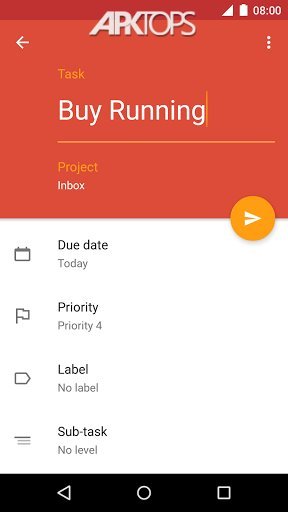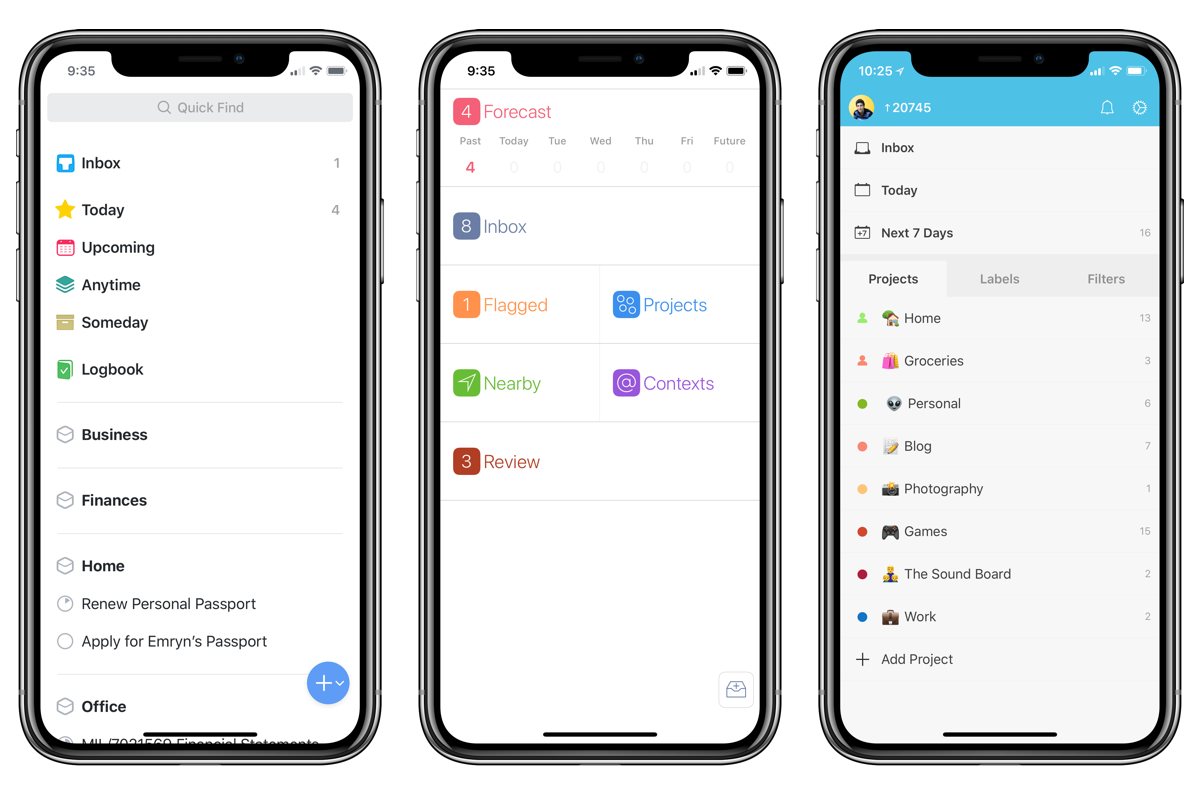Planning/task management: Trello / Todoist Kanban is the new cool, and Trello was go-to app for organizing my workload, writing ideas, phases of projects and whatever else I could think of. Writing in Markdown. Notes - if you are starting from scratch, decide between Bear App or the do-it-yourself Joplin. The latter is open source and robust and the former is simple, sleek, and inexpensive. Todo List - Todoist is Markdown compatible by default (and supports emojis 💥), which is why I continue to use it for all my task management. Mar 24, 2021 Todoist (free/premium). Keeps your notes and to-do lists together with a traditional menu bar that lets you format text and an option to use markdown to make quick changes. You can also group. Applications and components that support Markdown. Todoist is a task manager that provides surprisingly good Markdown support.
Try Essential free for 30 days. Only $5/month$4/month after.*
Free
—
More than enough features to enjoy the best of DAKboard for free!
Create a Free Account

Essential
$5per month
$4per month
billed annually
Custom layouts, multiple calendars, fast photo transitions and more!
Start Free Trial
additional screens $5/monthadditional screens $4/month
Plus
$10per month
$8per month
billed annually
For the power users that demand even more from DAKboard!
Start Free Trial
additional screens $6/monthadditional screens $5/month
Pro
Todoist Markdown Vs
$30per month
$26per month
billed annually
Business class services. Priority support, uptime SLA and more!
Start Free Trial
additional screens $7/monthadditional screens $6/month

In recent weeks I’ve made a shift in my Productivity Path. While I still love what The Omni Group is doing with OmniFocus, I am using another application for my task management these days.
Actually, I’m using two.
For the past six weeks, I’ve been using Asana for my larger team-oriented tasks and projects and Todoist for my individual and smaller team task management.
Why the switch, specifically from OmniFocus to Todoist? There are several reasons behind the move:
1. Ubiquity
Ultimately, most people want a task management solution that they can use anytime, anywhere. Unfortunately OmniFocus doesn’t provide that unless you are using iOS or Mac devices. But the fact of the matter is more people are using Android these days, and the only real solution that Android users have to get their stuff to OmniFocus are third party apps like Send-2-OmniFocus and OmniFocus Mailer. They can’t actually work with OmniFocus on the go, unless they’re also carrying an iPad or even a Mac notebook with them. That limits the accessibility of the app, and that is less than ideal.
Todoist, on the other hand, has a slew of platforms it is developed for:
- Android
- Chrome
- Windows
- iOS
- Mac
Todoist even integrates with Gmail, Outlook, and Postbox. No matter what device you’re using, you can access Todoist (as long as you are able to connect with the Internet upon launch). With integration for three major email clients, you have the ability to have your task manager at the ready while processing your email inbox. Very nice. And with the Todoist chrome extension, you can access your Todoist setup on any site.
Now that’s ubiquity.
2. Pricing
Longtime readers know that I don’t have a problem paying for products and services. I’ve dropped lots of cash on different applications that I’ve abandoned long ago. But I know that I am in the minority when it comes to paying for applications that many consider to be simply a “to do list” and nothing more. There are hundreds of free applications like this out there, but you get what you pay for in many cases.
Todoist Markdown App
I’d suggest that Todoist strikes a nice balance in this space, offering a limited free version that will work for many people, and a more robust premium version that scales up exceptionally well.
The free version of Todoist will suffice for people who are looking to add a task management component to their digital workflow for the first time, or for those who don’t need a lot of bells and whistles and yet still want a pleasing user experience. Todoist Premium is only $29 per year and you get a lot for your money. If you’ve been using a task management solution for a while and need to be able to customize things to better suit your approach to productivity, then you’ll definitely want to “go premium” with Todoist.
Todoist Premium offers a ton of features (productivity tracking, enhanced label system, project templates, file attachments, etc.) for what amounts to less than $2.50 per month. That kind of pricing is a lot easier to swallow than what other applications cost – OmniFocus included.
3. Flexibility
There are a few areas where I find Todoist’s flexibility to be another major selling point.
For one, Todoist also offers something that OmniFocus doesn’t: team task management. For the purposes of my virtual assistant experiment, I know I can create a project in Todoist and share items in there with my VA. I can’t do that with OmniFocus.
Now I know I can do this with Asana as well, but I actually prefer the ability to keep my own stuff separate from larger team stuff…and Asana is where I keep my larger team stuff. So I have a project that I use for things I work with my VA and as things come in I can actually drag them to that project from other projects that I’m not sharing. This process will help me offload some tasks I’ve got in my Inbox to my VA seamlessly. (Note: I’ll be sharing how I use Todoist with my virtual assistant more extensively in a future blog post.)
Todoist’s labelling is also helpful, in that I can decide whether I want to use “labels” as contexts or not. I can actually use them in a number of ways, and because I can apply multiple labels to a task I can really hone in on what I want to do at any given time.
I can also flag tasks with “priority levels,” allowing me to mark off my Three Big Rocks for the next day if I want. Todoist allows users to mesh their own approaches to productivity with well-known methodologies like GTD, The Agile Way, and even Kanban to a certain degree (largely through the use of colour). It’s incredibly flexible and versatile…which is what I need in a task management application.
Roadblocks Along The Way
There are a few things that I’m going to have to trudge through as I get used to using Todoist:
- No direct path from Drafts. Here’s hoping they get some URL schemes happening here. In the meantime, I simply email tasks to my Inbox and then process from there.
- No direct path from Dispatch. See above.
- No Weekly Review function…sort of. Todoist has Todoist Karma, which allows you to track your productivity, but I do miss the reviewing capabilities of OmniFocus (specifically on the iPad). I hope Todoist looks at adding this functionality in the future.
The more time I spend in Todoist, the more comfortable I’m getting. I’ll be writing more about my experience with it as the weeks and months progress.
I’ll still be keeping my eyes on what other options are out there, including OmniFocus, because that is part of my job. Apowermirror crack version for pc. But Android is on the rise (again, OmniFocus is Mac and iOS only) and I want to help people get comfortable using task management solutions. The pricing of something like OmniFocus can be a deal-breaker for those who don’t even think they need a tool like it in the first place. I’ll still be writing about OmniFocus from time to time, but there are a lot of great folks out there who write abut it regularly and focus specifically on it. Sven Fechner of SimplicityBliss, Tim Stringer of Technically Simple and Learn OmniFocus, Shawn Blanc, David Sparks, Kourosh Dini (who wrote the great Creating Flow with OmniFocus), and Asian Efficiency (who offer OmniFocus Premium Posts to help you get the most out of the app in its various iterations).

Microsoft composite battery download windows 10. I can say unequivocally that I’m a Todoist user now. I like what they’ve put together and I like where they’re headed. Asana is great for larger teams and I’ll continue to use it (and recommend it) for that purpose, but Todoist is now my personal task management application of choice.
Todoist Markdown Code
Thoughts on Todoist? Have another task management application of choice? I’d love to hear your thoughts in the comments below.
Do you want ideas, insights, and information on how to craft your time in just one weekly email?
Then you want ATTN: sent to you.
ATTN: is a weekly digest from Productivityist that delivers a week's worth of content in a nice little package directly to your inbox. Just enter your email to subscribe.
